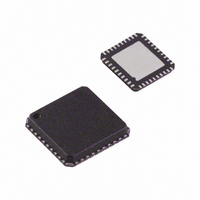ADV7393BCPZ Analog Devices Inc, ADV7393BCPZ Datasheet - Page 26

ADV7393BCPZ
Manufacturer Part Number
ADV7393BCPZ
Description
IC DAC VIDEO HDTV 10BIT 40LFCSP
Manufacturer
Analog Devices Inc
Type
Video Encoderr
Datasheet
1.ADV7393BCPZ.pdf
(108 pages)
Specifications of ADV7393BCPZ
Design Resources
Reconstruction Video Filter Using ADA4430-1 Amplifier After ADV7393 Video Encoder (CN0101)
Applications
Set-Top Boxes, Video Players, Displays
Voltage - Supply, Analog
2.6 V ~ 3.46 V
Voltage - Supply, Digital
1.71 V ~ 1.89 V
Mounting Type
Surface Mount
Package / Case
40-LFCSP
Input Format
Digital
Output Format
Analog
Supply Voltage Range
1.71V To 1.89V
Operating Temperature Range
-40°C To +85°C
Tv / Video Case Style
LFCSP
No. Of Pins
40
Msl
MSL 1 - Unlimited
Lead Free Status / RoHS Status
Lead free / RoHS Compliant
For Use With
ADV7393-DBRDZ - BOARD EVAL FOR ADV7393EVAL-ADV7393EBZ - BOARD EVAL FOR ADV7393 ENCODER
Lead Free Status / RoHS Status
Lead free / RoHS Compliant, Lead free / RoHS Compliant
Available stocks
Company
Part Number
Manufacturer
Quantity
Price
Company:
Part Number:
ADV7393BCPZ
Manufacturer:
SIEMENS
Quantity:
101
Part Number:
ADV7393BCPZ
Manufacturer:
ADI/亚德诺
Quantity:
20 000
Company:
Part Number:
ADV7393BCPZ-3
Manufacturer:
ADI
Quantity:
302
Part Number:
ADV7393BCPZ-3
Manufacturer:
ADI/亚德诺
Quantity:
20 000
Company:
Part Number:
ADV7393BCPZ3
Manufacturer:
OSRAM
Quantity:
4 298
ADV7390/ADV7391/ADV7392/ADV7393
MPU PORT DESCRIPTION
Devices such as a microprocessor can communicate with the
ADV739x through a 2-wire serial (I
power-up or reset, the MPU port is configured for I
operation. To obtain information about communicating with
the register map via SPI, contact Analog Devices, Inc.
I
The ADV739x supports a 2-wire serial (I
microprocessor bus driving multiple peripherals. This port
operates in an open-drain configuration. Two wires, serial data
(SDA) and serial clock (SCL), carry information between any
device connected to the bus and the ADV739x. The slave
address depends on the device (ADV7390, ADV7391,
ADV7392, or ADV7393), the operation (read or write), and the
state of the ALSB pin (0 or 1). See Table 16, Figure 47, and
Figure 48. The LSB sets either a read or a write operation. Logic
1 corresponds to a read operation, and Logic 0 corresponds to a
write operation. A1 is controlled by setting the ALSB pin of the
ADV739x to Logic 0 or Logic 1.
Table 16. ADV739x I
Device
ADV7390
and
ADV7392
ADV7391
and
ADV7393
2
C OPERATION
0
1
Figure 47. ADV7390/ADV7392 I
Figure 48. ADV7391/ADV7393 I
ALSB
0
0
1
1
0
0
1
1
1
1
0
0
2
C Slave Addresses
1
1
0
0
Operation
Write
Read
Write
Read
Write
Read
Write
Read
2
C-compatible) bus. After
1
SET UP BY
CONTROL
1
CONTROL
SET UP BY
ADDRESS
ADDRESS
2
2
C Slave Address
ALSB
C Slave Address
ALSB
2
A1
C-compatible)
A1
READ/WRITE
READ/WRITE
0
1
CONTROL
CONTROL
0
1
WRITE
READ
WRITE
READ
X
Slave Address
0xD4
0xD5
0xD6
0xD7
0x54
0x55
0x56
0x57
X
2
C
Rev. B | Page 26 of 108
The various devices on the bus use the following protocol. The
master initiates a data transfer by establishing a start condition,
defined by a high-to-low transition on SDA while SCL remains
high. This indicates that an address/data stream follows. All
peripherals respond to the start condition and shift the next
eight bits (7-bit address plus the R/ W bit).
The bits are transferred from MSB down to LSB. The peripheral
that recognizes the transmitted address responds by pulling the
data line low during the ninth clock pulse. This is known as an
acknowledge bit. All other devices withdraw from the bus at
this point and maintain an idle condition. The idle condition
occurs when the device monitors the SDA and SCL lines
waiting for the start condition and the correct transmitted
address. The R/ W bit determines the direction of the data.
Logic 0 on the LSB of the first byte means that the master writes
information to the peripheral. Logic 1 on the LSB of the first byte
means that the master reads information from the peripheral.
The ADV739x acts as a standard slave device on the bus. The
data on the SDA pin is eight bits long, supporting the 7-bit
addresses plus the R/ W bit. It interprets the first byte as the
device address and the second byte as the starting subaddress.
There is a subaddress auto-increment facility. This allows data
to be written to or read from registers in ascending subaddress
sequence starting at any valid subaddress. A data transfer is
always terminated by a stop condition. The user can also access
any unique subaddress register on a one-by-one basis without
updating all the registers.
Stop and start conditions can be detected at any stage during
the data transfer. If these conditions are asserted out of
sequence with normal read and write operations, they cause an
immediate jump to the idle condition. During a given SCL high
period, the user should issue only a start condition, a stop
condition, or a stop condition followed by a start condition. If
an invalid subaddress is issued by the user, the ADV739x does
not issue an acknowledge but returns to the idle condition. If the
user uses the auto-increment method of addressing the encoder
and exceeds the highest subaddress, the following actions are
taken:
•
•
Figure 49 shows an example of data transfer for a write sequence
and the start and stop conditions. Figure 50 shows bus write
and read sequences.
In read mode, the highest subaddress register contents are
output until the master device issues a no acknowledge.
This indicates the end of a read. A no acknowledge condition
occurs when the SDA line is not pulled low on the ninth pulse.
In write mode, the data for the invalid byte is not loaded
into any subaddress register, a no acknowledge is issued by
the ADV739x, and the part returns to the idle condition.













